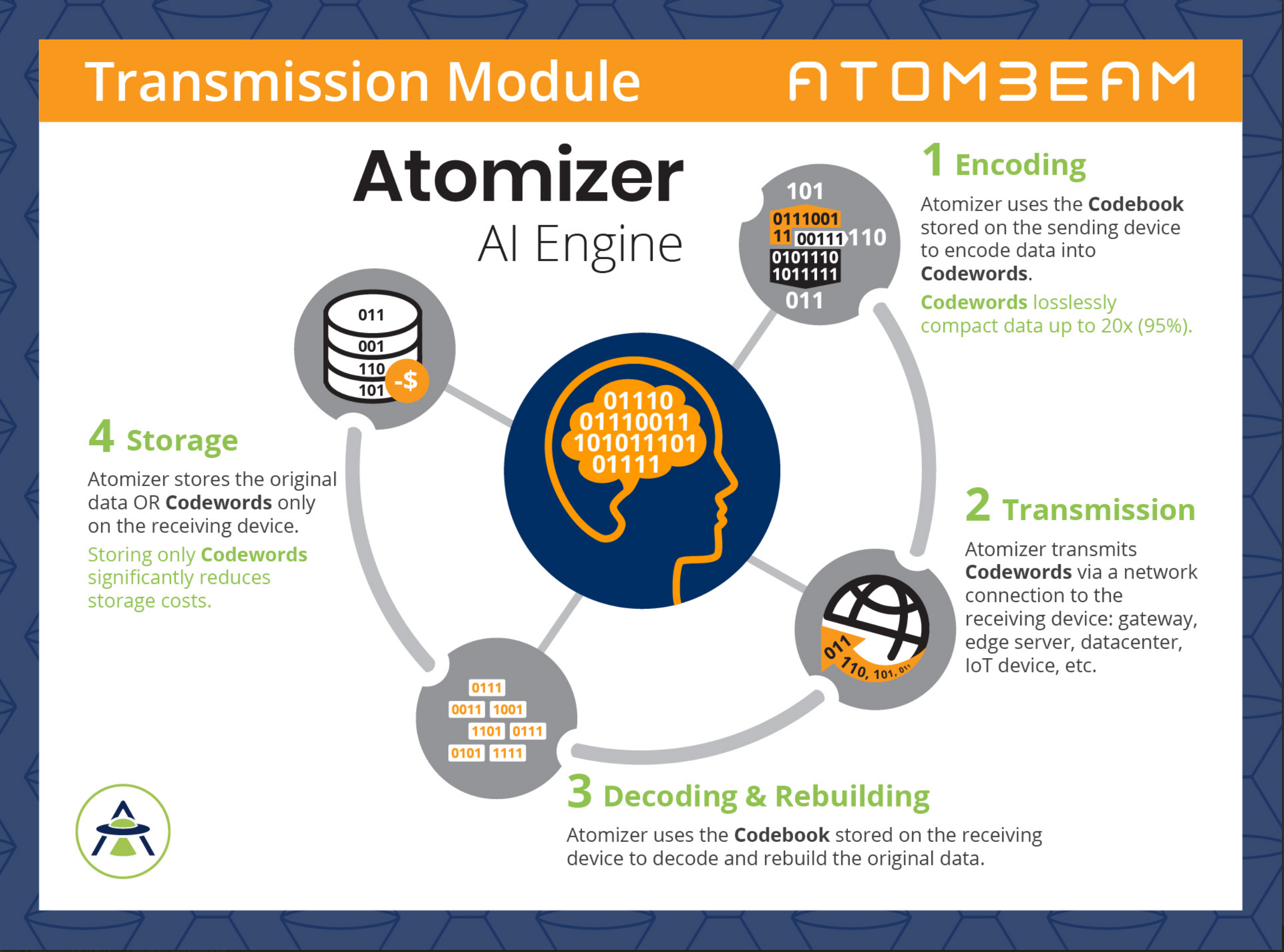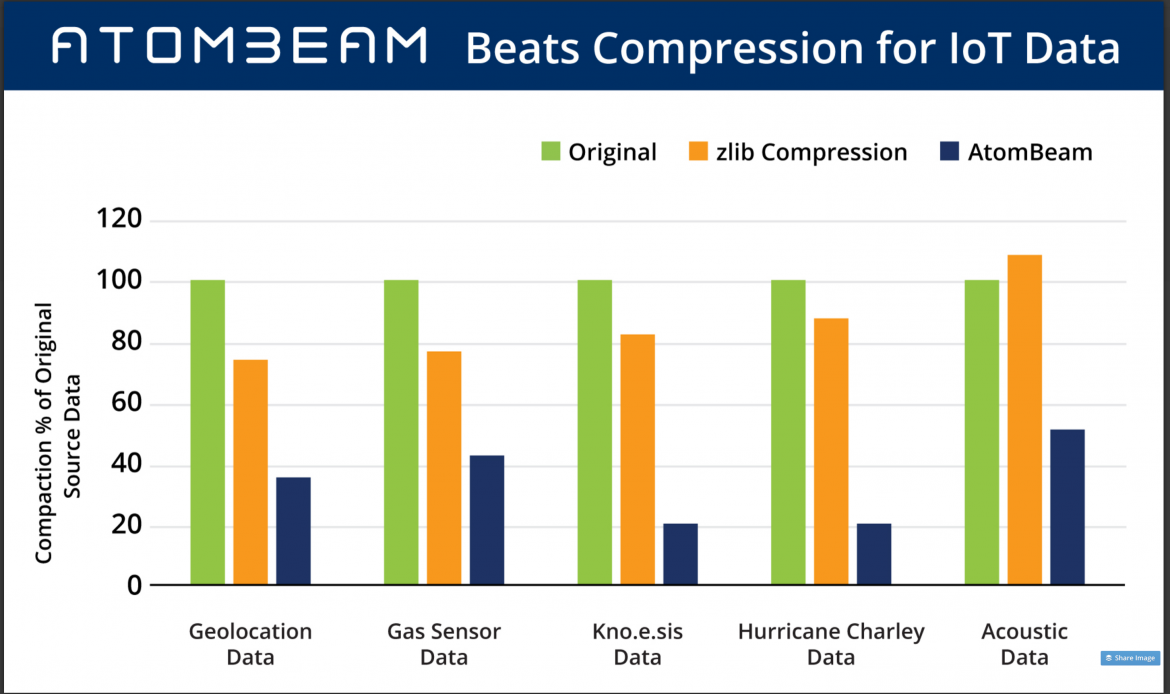AtomBeam Technologies is a new company looking to become the standard for IoT data transmission and storage thanks to its AI software which streams highly-compacted data with near-zero latency. Using the latest machine learning encoding techniques, the company aims to replace existing compression algorithms.
According to IDC Research, IoT will constitute 90 zettabytes, or 51%, of all data generated in 2025. In addition, nearly 91.5% of data transactions handled by IoT devices in corporate networks are unencrypted.
AtomBeam hopes to help with both issues.
The Moraga, CA company identifies patterns in training data and indexes patterns allowing just a pattern market to be sent, instead of entire data sets. The solution is optimized for data packets as small as 30 bits.
The company’s patented tech claims to reduce data transmission by 3-5 times.
The code is lightweight at 50K allowing it to be embedded in LPWAN applications, IoT sensors, servers, storage, etc.
Other benefits include completely lossless transmission, minimal latency, minimal error sensitivity, random access, transmission reduction of up to 50%, battery life savings of up to 35%, cloud cost reduction of up to 75% and the ability to handle any type of data.

AtomBeam licenses its software to makers of IoT devices, IoT gateways, edge platforms, data center servers, and storage systems. Telcos, satellite companies, and other providers are partnering with AtomBeam to specify the inclusion of AtomBeam in devices and servers connected to their networks.
The company describes its compression tech as follows:
AtomBeam works by using its AI/machine learning module to identify patterns, called Sourceblocks, in advance.
Sourceblocks and their associated, smaller indexes, or Codewords, are then stored in a Codebook that is replicated on both the sending and receiving computers, IoT endpoints, and data centers. When live data needs to be transmitted, only Codewords are sent, dramatically reducing the data flow.

In the future, we can expect:
• Dynamic Codebooks. AtomBeam will add the ability to dynamically update Codebooks as data patterns change.
• Random Access. Anyone who has had to retrieve stored data for analysis knows that it is a time-consuming process. With AtomBeam’s upcoming release, a user will be able to discretely decode a single IoT message from many terabytes of stored data, a major advantage over traditional methods.
Certainly IoT devices will only proliferate and send more data. Attacks on these sensors and other “things” will grow. AtomBeam hopes to help the entire internet of things market by reducing data transmission, battery usage and unencrypted transmissions. It hopes to solve all these problems while adding almost no latency via the use of the latest AI and ML tech.






